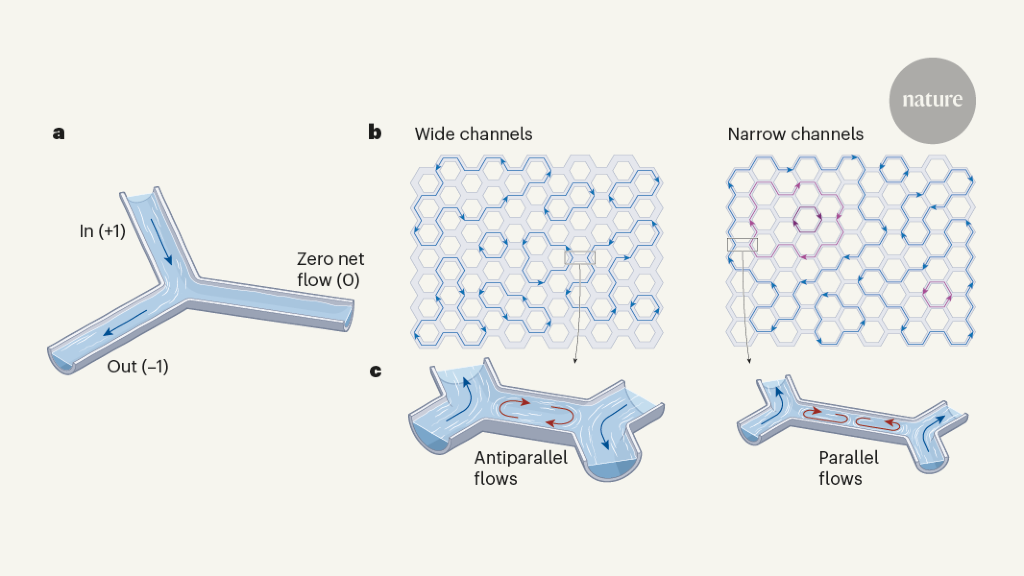Understanding Fluid Dynamics in Vascular Networks
Conceptos Básicos
Active fluids flowing through networks follow specific rules that predict the observed patterns.
Resumen
Blood flow in the body's vascular network is governed by conservation of fluid volume, where flows into each node must equal outgoing flows. Changes in flow at one node can impact the entire network, leading to complex relationships between flows. Active fluids, like blood, exhibit patterns that can be predicted by specific rules when flowing through large-scale networks.
Personalizar resumen
Reescribir con IA
Generar citas
Traducir fuente
A otro idioma
Generar mapa mental
del contenido fuente
Ver fuente
www.nature.com
Active fluids navigate networks by solving sudoku-like problems
Estadísticas
Conservation of fluid volume ensures sum of flows into each node equals outgoing flows.
Active fluids follow rules predicting observed patterns.
Citas
Ideas clave extraídas de
by Mathieu Le V... a las www.nature.com 02-06-2024
https://www.nature.com/articles/d41586-024-00277-4
Consultas más profundas
How do active fluids differ from normal fluids in terms of flow patterns
Active fluids differ from normal fluids in terms of flow patterns due to their self-propelled nature. Unlike passive fluids, active fluids exhibit dynamic behaviors that lead to the emergence of complex patterns as they navigate through networks. These patterns are a result of interactions between flows at different points in the vasculature, setting up intricate relationships that can be influenced by changes in flow at individual nodes. The presence of activity within the fluid introduces an additional layer of complexity, leading to unique flow patterns not observed in traditional fluid systems.
What implications do the findings have for understanding diseases related to blood flow
The findings regarding active fluids flowing through large-scale networks have significant implications for understanding diseases related to blood flow. By analyzing the rules that govern these active fluid systems, researchers can gain insights into how disruptions or abnormalities in flow patterns may contribute to various vascular conditions. For example, studying how changes in flow dynamics impact the overall network behavior could provide valuable information on conditions like hypertension, atherosclerosis, or thrombosis. Understanding how active fluids behave within vascular networks can offer new perspectives on disease mechanisms and potential therapeutic targets aimed at restoring normal flow patterns.
How can the study of active fluids in networks be applied to other scientific fields
The study of active fluids in networks has broad applications across other scientific fields beyond vascular biology. One key area where this research can be applied is in understanding collective behavior and self-organization phenomena seen in diverse systems such as swarm robotics, social dynamics, and ecological networks. By leveraging the principles derived from analyzing active fluid flows, scientists can develop models and algorithms that mimic these natural processes for designing efficient transportation systems, optimizing communication networks, or managing resource distribution strategies. Additionally, insights gained from studying active fluids could inform advancements in materials science for developing self-healing materials or responsive surfaces based on principles observed in biological fluid dynamics.
0
